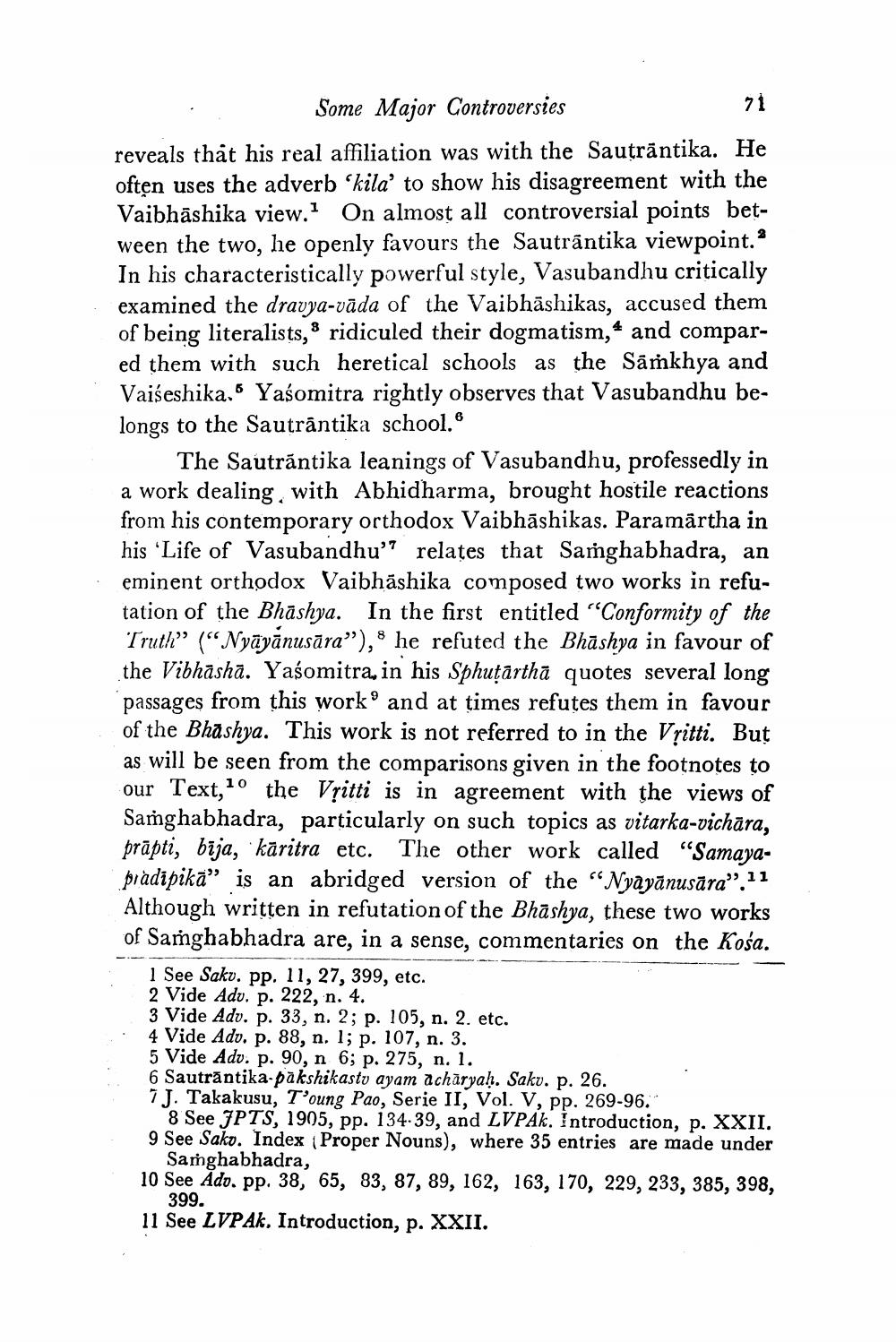________________ Some Major Controversies 71 reveals that his real affiliation was with the Sautrantika. He often uses the adverb 'kila' to show his disagreement with the Vaibhashika view. On almost all controversial points between the two, he openly favours the Sautrantika viewpoint. In his characteristically powerful style, Vasubandhu critically examined the dravya-vada of the Vaibhashikas, accused them of being literalists, 8 ridiculed their dogmatism,* and compared them with such heretical schools as the Samkhya and Vaiseshika. Yasomitra rightly observes that Vasubandhu belongs to the Sautrantika school. The Sautrantika leanings of Vasubandhu, professedly in a work dealing with Abhidharma, brought hostile reactions from his contemporary orthodox Vaibhashikas. Paramartha in his 'Life of Vasubandhu' relates that Samghabhadra, an eminent orthodox Vaibhashika composed two works in refutation of the Bhashya. In the first entitled "Conformity of the Truth" ("Nyayanusara"), he refuted the Bhashya in favour of the Vibhasha. Yasomitra, in his Sphutartha quotes several long passages from this work and at times refutes them in favour of the Bhashya. This work is not referred to in the Vtitti. But as will be seen from the comparisons given in the footnotes to our Text, 10 the Vtitti is in agreement with the views of Samghabhadra, particularly on such topics as vitarka-vichara, prapti, bija, karitra etc. The other work called "Samayapradipika" is an abridged version of the "Nyayanusara". 11 Although written in refutation of the Bhashya, these two works of Samghabhadra are, in a sense, commentaries on the Kosa. 1 See Saku. pp. 11, 27, 399, etc. 2 Vide Adv. p. 222, n. 4. 3 Vide Adv. p. 33, n. 2; p. 105, n. 2. etc. 4 Vide Adv. p. 88, n. 1; p. 107, n. 3. 5 Vide Adv. p. 90, n 6; p. 275, n. 1. 6 Sautrantika-pakshikastu ayam acharyah. Saku. p. 26. 7 J. Takakusu, T'oung Pao, Serie II, Vol. V, pp. 269-96.* 8 See 7PTS, 1905, pp. 134.39, and LVPAK. Introduction, p. XXII. 9 See Sako. Index Proper Nouns), where 35 entries are made under Samghabhadra, 10 See Ado. pp. 38, 65, 83, 87, 89, 162, 163, 170, 229, 233, 385, 398, 11 See LVPAk, Introduction, p. XXII. 399.




